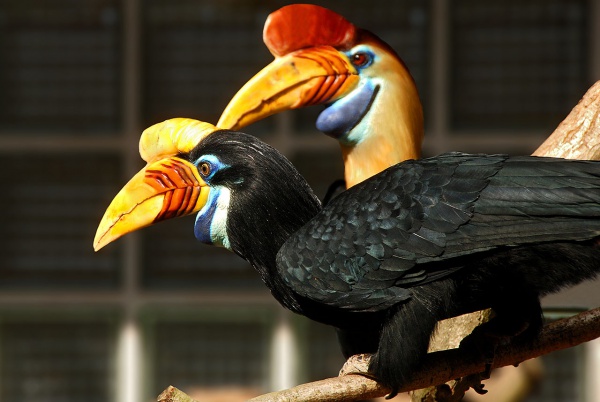Facts About Knobbed hornbill
The knobbed hornbill, also known as the Sulawesi wrinkled hornbill, is a strikingly colorful bird endemic to Indonesia. These magnificent creatures can be found on Sulawesi, Buton, Lembeh, Togian, and Muna Islands. They are sometimes classified under the genus *Aceros* and are designated as the faunal symbol of South Sulawesi Province.
These large, black hornbills are easily recognizable by their vibrant yellow bills, white tail feathers, and blue skin around their eyes. Notably, males and females exhibit sexual dimorphism, with differences in the coloration of their casque and eyes.
Knobbed hornbills are monogamous, maintaining lifelong partnerships. Their diet primarily consists of fruits, but they also consume insects and small vertebrates, playing a crucial role in their ecosystem by dispersing seeds of various tropical forest trees.
The breeding season for these hornbills spans about 27-30 weeks. During this period, the female seals herself inside a tree cavity to lay her eggs. The male then feeds her through a small opening, ensuring she and the future chicks are adequately nourished.
Regrettably, knobbed hornbills face significant threats. The International Union for Conservation of Nature (IUCN) classifies them as vulnerable, primarily due to habitat destruction from logging and, to a lesser extent, hunting. Despite being locally common, their dependence on large, mature trees for breeding makes them especially susceptible to habitat loss.

 Papua New Guinea
Papua New Guinea